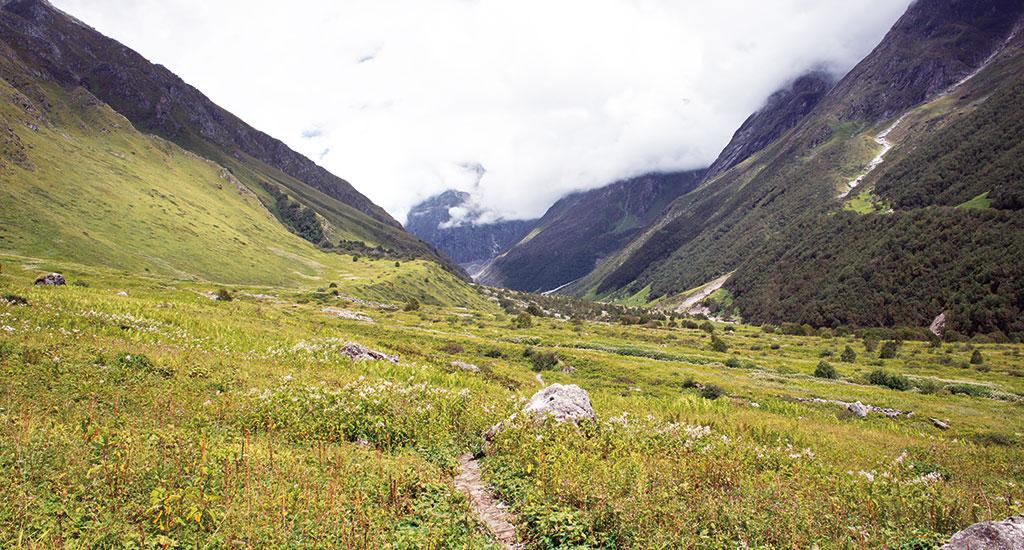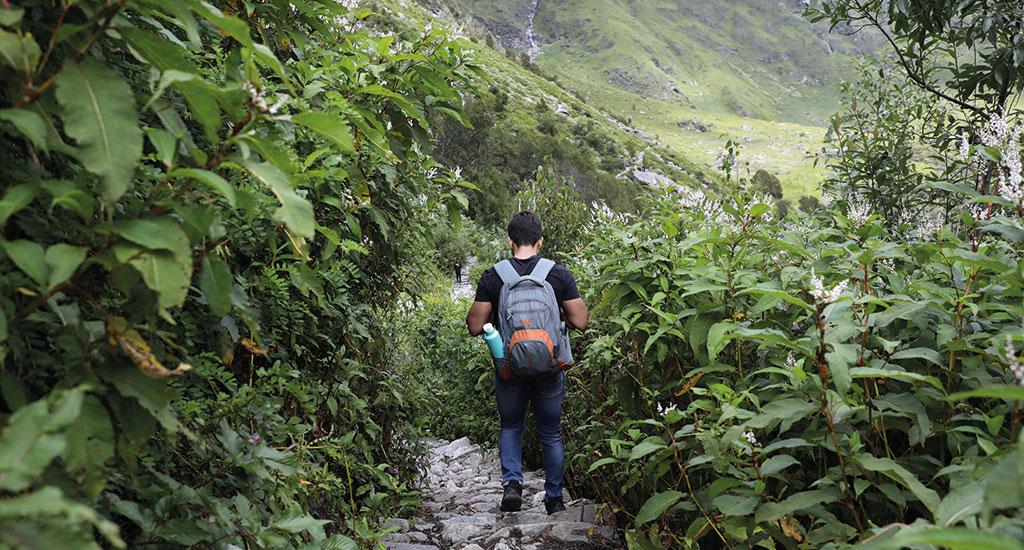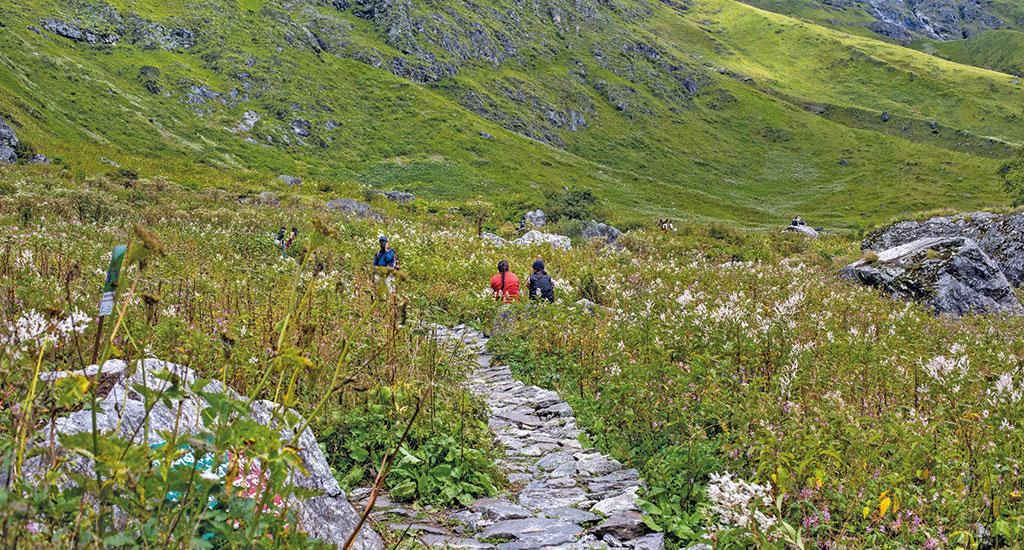
The density and diversity of blooms in the Valley of Flower National Park has been declining. “It is ‘Valley of Flowers’ in name only; shrubs and weeds dominate now,” says octogenarian Bharat Singh Chauhan of Pulna village adjacent to the valley. “There are flowers, but mostly in patches; not in the panoramic spread seen earlier. Ninety per cent of the tourists who visit the valley are disappointed with the sights,” he adds. Photo: Vikas Choudhary / CSE

Over 2 metre-tall Himalayan knotweed plants and ferns line parts of the trek to the Valley of Flowers. Smaller flowering plants seldom emerge under such thick growth, or remain hidden. “Every year, the forest department spends lakhs of rupees on labourers who manually uproot the weed. Last year, the activity was undertaken thrice,” says Chandrashekhar Chauhan, president of Eco Club, a non-profit that works to remove plastic waste in the area. Photo: Vikas Choudhary / CSE

The number of trees in the valley has increased due to a perceptible shift in the treeline, hindering flower growth. Photo: Vikas Choudhary / CSE

This stretch should be dominated by Bistoria affini, which blooms from June to September, as displayed in this official placard. But this picture, clicked in August, is a far cry from the times when “it was impossible to take a step without crushing a flower” as British botanist Frank Smythe wrote in his 1938 book The Valley of Flowers, a name that has since stuck to the valley. Photo: Vikas Choudhary/ CSE

The valley witnessed landslides earlier too, but their number has increased in recent years, says Santosh Rana, a tour guide operating in the area. The temperatures have risen and snowfall, which provides moisture to the germinating plants, has significantly reduced, he says. Photo: Vikas Choudhary / CSE

The white Himalayan knotweed flowers are visible in most parts of the valley. Here they dominate purple balsam flowers seen in the foreground. The government’s decision to uproot the weed only ends up tilling and preparing the soil for the next bloom of the same flower, says Pallav Singh Chauhan of Bhyundar village, located adjacent to the valley. Photo: Vikas Choudhary / CSE
